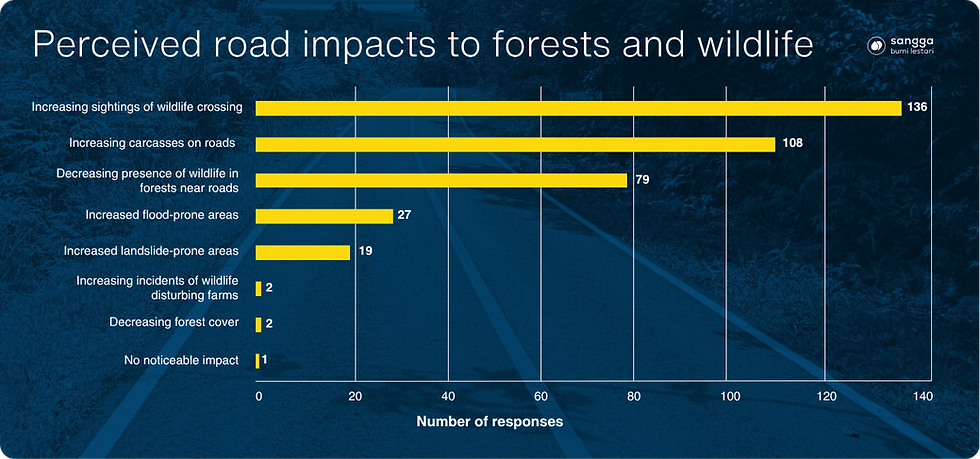Understanding the Impact of Roads on Wildlife
- yayasansanggabumi
- Jun 19
- 2 min read
Road infrastructure plays a vital role in regional economic development. It connects communities, facilitates trade, and improves access to essential services.
In Bentarum in West Kalimantan, a road running east to west cuts through the landscape, linking the Kapuas Hulu capital Putussibau with Sarawak—bringing both opportunities and challenges. While it supports mobility and economic activity, it also intersects with natural habitats. To better understand the impact of the road, for the last few months Sangga Bumi has been conducting a road impact survey.

This survey includes roadkill counts, traffic monitoring, and interviews with residents and workers to understand how the road is used and what wildlife is being observed. Additional insights come from camera traps placed along the road at varying intervals, revealing the presence and movement of key species.

Like much infrastructure development, the road in Bentarum is viewed positively by people living there. It has eased access to public facilities and markets and is used significantly, especially by motorbikes.
Its impact on wildlife is more complicated. From our roadkill monitoring, reptiles (particularly snakes), birds, and small mammals like rats and squirrels are the animals most often found dead on the road. People living and working in the vicinity report that while they see reptiles and small mammals on the road, they see large mammals in the forests on either side of the road less frequently than before it was asphalted, pre-covid.

We have not found any evidence of large mammals like orangutans or forest cats crossing the road, and our provisional analysis indicates the road has essentially cut Bentarum into two separate habitat blocks, a north and a south. However, our camera trap surveys have found several species using the road-side forest areas. Some are not surprising: long-tailed macaques (Macaca fascicularis) and pig-tailed macaques (Macaca nemestrina) are opportunistic, highly adaptive primates that can thrive in human-altered landscapes.
However, the flat-headed cat (Prionailurus planiceps), an elusive, Endangered cat that mainly inhabits wetlands, was found within 200 metres of the road. As was the sun bear (Helarctos malayanus), a shy animal that usually avoids humans.

This indicates a complex habitat use and confirms the need to protect road-side forest areas and potentially link the north and south forest blocks. Sangga Bumi has identified 13 points along the road that present opportunities for habitat connectivity, either because there is some degree of canopy cover, traffic flow is low, and there is little evidence of roadkill.
As Indonesia develops, more and more key biodiversity habitats will be altered by infrastructure and human behaviour. If we are to mitigate the worst of these impacts and ensure threatened wildlife can survive in human-altered landscapes, all key stakeholders will have to work together. Sangga Bumi’s road impact survey will lead to the development of a road management plan that ensures this development doesn’t further threaten Bentarum’s wildlife.



